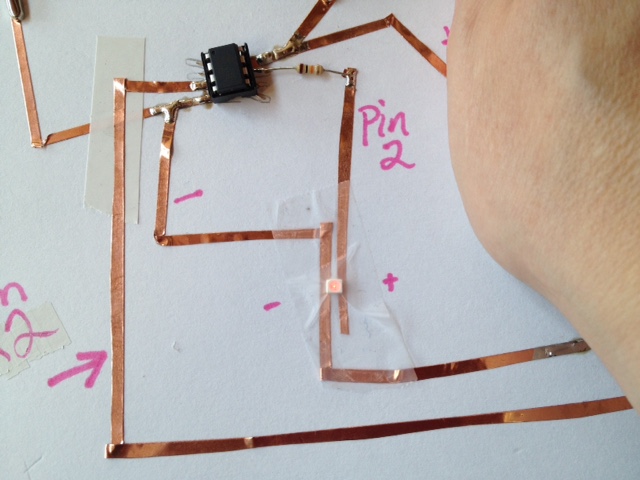The video above features my latest blinged-out book, a Coptic-bound journal with embedded paper circuitry components and hand-painted watercolor covers.
This is my second attempt to hide and embed the components inside of a book cover. This iteration worked better than my first (the sparkling Sea Turtle), because I figured out that I could put the finished covers into a book press to keep them from warping if I placed a folded dishtowel between the covers and pressing boards.
 |
| Here are the guts of the front cover. I cut holes for the microprocessor, switch, and battery. |
Like the Sea Turtle book, I embedded a switch into the front cover. While it doesn't look too intrusive, I'd like to figure out a more elegant way to do this. I'd also like to design a book and a cover that actually tell some sort of story.
The last time I attempted a binding like this (with an embedded circuit), I discovered that there wasn't enough tension on the inside cover flap to keep the copper leads in contact with the battery. I got around that this time by using an adhesive-backed magnet. I think that a super thin piece of strong velcro would work equally well. You may notice that I also soldered copper disks to the positive and negative leads to ensure a better electrical connection.















